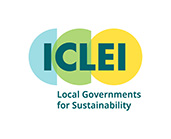
" style="float: right; margin: 0px 0px 15px 15px; width: 250px;">
Sustainable Public Procurement
Sustainable public procurement (SPP) is the act of purchasing products and services with the lowest environmental and highest positive social impacts, throughout the life-cycle of products and services. [1][3] This includes considering a wide range of characteristics of the products and services procured, such as: the use of non-toxic substances, renewable materials, energy and water consumption during use, as well as disposal, reuse and recycling options at the end of life.Sustainable public procurement measures can be adopted at different levels. For example, by minimizing the need to purchase, it can target one specific product type or service such as buying only recycled paper or products with eco-labels as basic procedures, or go as far as integrating environmental and social aspects into all procurement activities, considering the life-cycle costing (LCC) of goods, works and services [1], for example by establishing criteria for project evaluation in areas where service delivery is under the responsibility of Local Governments (e.g. water supply, waste collection, mass transit, public buildings, etc.). This Solution seeks to support local governments on their path towards putting a comprehensive sustainable procurement policy in place.



